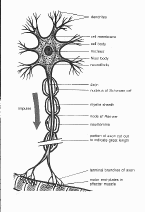|
Biological significance of various elements in the Periodic Table |
||||||
Although
Carbon
Oxygen
Hydrogen
Nitrogen and
Phosphorous are by far
the most notorious elements in biochemistry. Many others are vital, and
others extremely useful tools in diagnostics and therapeutics while others
are needed in small amounts and toxic in large.
 The following are a few examples: 1) H - most abundant element in the universe (95%) H2 gas, next energy currency molecule, Hindenburg 2H = deuterium, 3H = tritium (radioactive isotope) H+ = a proton , ph low (high acid) when [H+] high ........ ZANTAC 
2) He - the breakdown
product of radioactive uranium and the final product of fusion 3) Li - antidepressant for bipolar disorders (manic depression) 4) B - botanical Trace Element (TE) , boric acid , borax 5) C - building
block of organic chemistry
7) O high E, oxidant = removes electrons |







